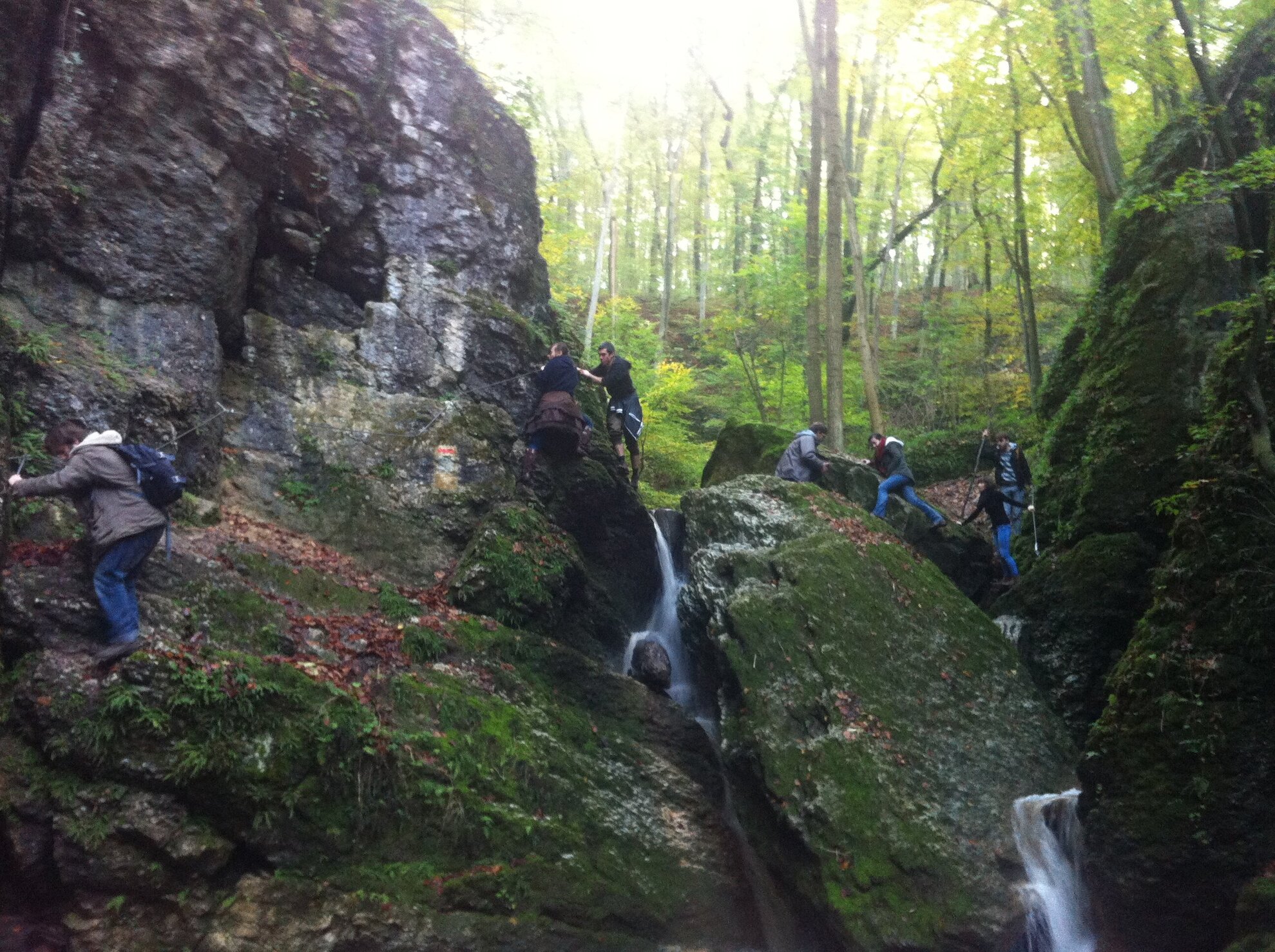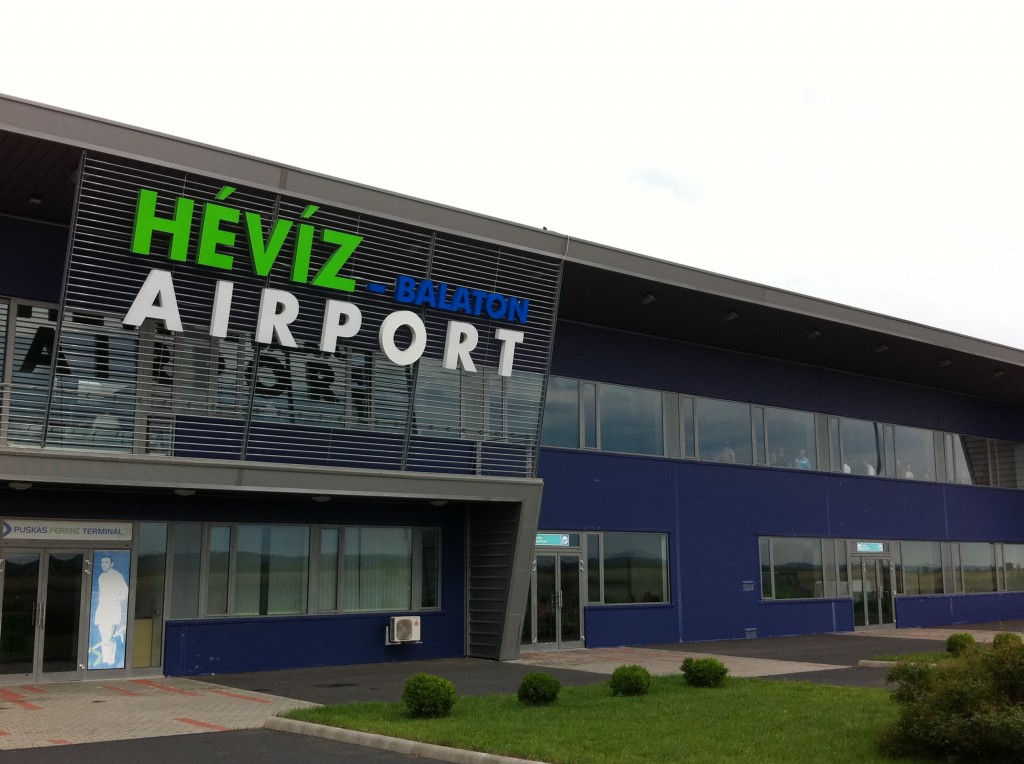The Balaton landscape is full of colors these days, with black locust and elderberry blooming at the same time, and poppy fields looking just like animated Impressionist paintings. In the next part of our Enyém a Balaton! campaign, we feature a handful hiking destinations we’ve discovered in recent years: these are just as fun as Balaton’s hiking heavyweights, like Hegyestű and the Castle of Szigliget; the only thing is that you need to venture a bit deeper into the countryside to find them. Put your hiking boots on!
Kopasz Hill
Kopasz Hill is one of the less highly frequented tourist destinations in the Káli Basin, but if you’re over the basalt organs of Szent György Hill, and you can find Hegyestű with your eyes closed, this small and bare hilltop will no doubt feel like a breath of fresh are. The 330-meter hill has an exceptional view of the neighboring monadnocks, with Mindszentkálla sprawled out below like a charming hobbit village. Previously used for grazing, the area was turned into a basalt mine in the second half of the past century, resulting in sparse vegetation and rocky, dry soil, which – despite not being ideal for wildlife – is home to a few unique species. Once you reach the peak, drop by the farm of goat cheese queen Viktória Pettenkoffer on Bácshegy, on the other side, but don’t forget to book an appointment first.
Good to know:
- The easiest way to reach the hill is from Rákóczi Street, which starts at the church of Szentbékkálla. Toward the top, the street connects to a dirt path, and later to a long flight of basalt stairs.
- This Hungarian language publication by the Balaton Uplands National Park contains useful information on the history, flora, and fauna of the region.
Why it’s worth visiting:
- The number of basalt steps leading to the top is allegedly the same as the number of days in a year. Counting them can be a fun activity for the kids.
- The Hungarian Iris blooms during May and June.
- If you’re a Gerald Durrell fan, you’ll probably be excited to see the wolf spider Geolycosa vultuosa lunge out of its underground cave to grab its victim.
Nagyberek
Located south of Balatonyfenyves, Nagyberek used to be a vast marshland back in the Reform Era. The original wildlife of the area has been restored at several locations, including the protected Fehérvízi Marshland. Since 2013, the Tourism Association of Balatonfenyves has organized tours of various lengths by various means of transport where visitors can explore the natural beauty of the region. Real adventurers can hop into a kayak or a canoe to take a closer look at the reed beds; if you’d rather stay on dry land, you can make use of the hiking trails, covering a total of 52 kilometers, either on foot or by bike. Those who want the view, but not the exercise can go for the narrow-gauge railway connecting Balatonfenyves and Somogyszentpál: the journey takes 90 minutes, and you can enjoy the gentle breeze from your seat, but you probably won’t be able to observe water birds in an undisturbed setting.
Good to know:
- Nagyberek can only be visited on the guided tours of the Tourism Association of Balatonfenyves. Check out the association’s website for more information.
- You can find the timetable of the narrow-gauge railway on the website of MÁV.
Why it’s worth visiting:
- Water lilies start blooming in late May, transforming the marshes of Nagyberek into a carpet of white flowers.
- In May the birds of Nagyberek start looking for partners; during these weeks the males are easier to spot because they try to attract the attention of the females with conspicuous behavior.
- A visit to Csisztapuszta Spa may be a good option on cooler spring days.
Fekete-hegyi Ponds
Nested between Balatonhenye, Szentbékkálla, and Köveskál, Fekete Hill’s ponds are sometimes referred to as tarns, which is somewhat of an exaggeration, even if the marshes up on the hill present quite an extraordinary view. In the past few years, the lakes have hardly exceeded a depth of 1-1.5 meters, but documents from the archives suggest that they were once deep enough for fishing.
If you approach from the direction of Szentbékkálla, you need to pass the ruins of Töttöskáli Church, built in the Árpád era. As you come up to Öreghegyi Well, you can refill your bottles with refreshing water, but only if it’s clear, as pointed out by the old sign. When you reach the top, climb up to Eötvös Károly Observation Tower to see Káli Basin from a height of 369 meters.
Good to know:
- The section of the National Blue Tour linking Balatonhenye and Szentbékkálla runs on Fekete Hill, so you can find your way to the top if you follow the blue hiking trail sign from either village.
Why it’s worth visiting:
- In rainy weather, the wildlife in the hilltop ponds is particularly lively.
- The hill and its surroundings are best to avoid in summertime, as the basalt surface only makes the heat worse.
Zalaszántó
Situated in the middle of the Keszthely Plateau, the village can be a great starting point for a single center tour featuring all the nearby attractions. First you have to check out Kotsy Watermill by the main street: its wheel, which is almost four meters in diameter, is powered by water to this day. From here you can take a short stroll to Világosvár Glade and the biggest stupa of Europe. The building is 30 meters tall and 24 meters wide, and was inaugurated in 1993 by none other than the Dalai Lama. Found west of the Buddhist shrine, the peak of Kovácsi Hill is a longer hike away, but the gigantic stone blocks with caves and gorges make the adventure absolutely thrilling. You can take a bus back to Zalaszántó from neighboring Vindornyaszőlős.
Tátika Castle, another cool hiking destination, is situated northeast of the village. You can leave your car in the parking lot by Zalaszántó–Bazsi Road, and follow the designated trail all the way to the ruins of the oldest private castle in Hungary. The canopy of trees above mainly comprises beech, hornbeam, and pedunculate oak; some of the tress could, in fact, be as old as 200 years.
Good to know:
- There’s no designated hiking trail running between the stupa and Kovácsi Hill, so you’ll have to rely on your compass or smartphone.
Why it’s worth visiting:
- After the hike, you can reward yourself with a tasty dinner at Öreg Harang in Hévíz, which is a 15-minute drive away. In 2013 the eatery became Gault&Millau’s Tavern of the Year.
Kis-Balaton
A couple of hundred years ago Kis-Balaton was no more than a boggy part of Lake Balaton. After an attempt to transform the marsh into arable land, which almost destroyed the ecosystem of the main lake, a new water protection system was set up to help the marshland regenerate, and to reduce the amount of algae in Balaton. Since then, the team of the Balaton Uplands National Park has been keeping a watchful eye on Kis-Balaton.
Covering about 15 hectares, the specially protected area is safeguarded diligently: most of it can only be visited on the guided tours of the BFNP. One of the hikes worth trying starts at Fenékpuszta, north of Kis-Balaton, and ends on Diás Island: during the tour you can take a peek inside the Fekete István Memorial House and the so-called Matula Cottage, modeled on the old reed shacks of Balaton fishermen. Visitors can also sign up for a three-hour tour, and explore a route tailored to their needs, or go on a nature photography excursion lasting a whole day.
Hikers can roam freely on Kányavári Island, accessible from the direction of Balatonmagyaród; the two-kilometer study trail showcases the birdlife of the area. The Buffalo Reserve in Kápolnapuszta, located on the south edge of the island, is also a must.
Good to know:
- Dogs kept on leads are welcome on most tours.
Why it’s worth visiting:
- On June 4 tickets to Diás Island can be purchased at a discount price on the occasion of the Week of Hungarian National Parks.
+1: Ördög Trench, Bakony
Ördög Trench ("ördög" meaning devil in Hungarian) is found 30 kilometers from Veszprém, but it’s absolutely worth the drive. The mysteriously named limestone gorge is, in fact, a two-kilometer stream bed, but if you find yourself here on a dry summer day, you won’t need to put your wellies on because the stream shrinks into a rill during the warmer months. When springtime is particularly wet, like this year, it becomes a swift creek, which crosses the hiking path several times, presenting a new challenge to hikers at each turn. There’s no bridge, only mossy stones and slippery logs, so you’ll definitely need resourcefulness when crossing. Ördög Barrier or Gizella Pass is without a doubt the most exciting part of the trench: here the narrow canyon is blocked by a huge rock, which fell down from the top; iron ladders and metal wires have been installed to make the passage easier. The dragon caves inside the rock can be especially intriguing for little children.

Good to know:
- To reach Ördög Trench, follow the hiking trail with the red symbol, running between Dudar and Csesznek. This is a 13-kilometer hike.
- If you feel like a shorter trip, try the route between Dudar and Bakonyoszlop. When you set off from Bakonyoszlop, follow the red cross symbol, and turn left when you come up to the trail marked with the red stripe.
Why it’s worth visiting:
- This spot has the adventure factor, but not the crowds.




